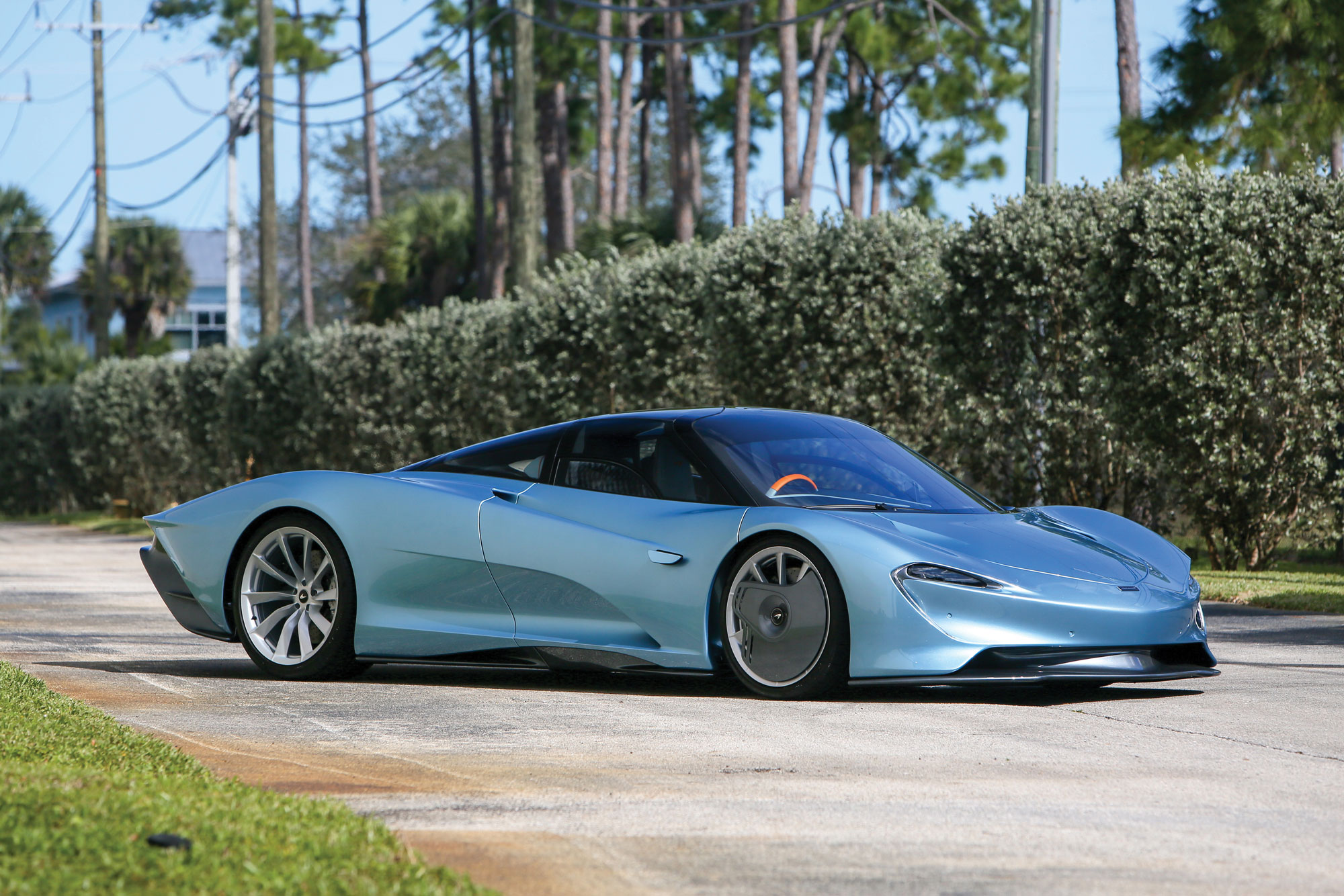Chassis Number: SBM23GDG1LW403087
Drawing on the spirit of the F1, and incorporating everything the Woking, England-based automaker has learned in the intervening decades, the 2020 McLaren Speedtail once again pushes the automotive envelope. Limited to just 106 units, the same as its predecessor the F1, the futuristic Speedtail is an exclusive offering on the cutting edge of 21st-century hypercar performance.
Like the F1, the Speedtail is built around a lightweight carbon-fiber tub. This time, the composite material is reinforced with titanium strands and sculpted into a more-dramatic “teardrop” shape surmounted by a one-piece glass canopy. The F1’s signature three-person seating configuration and vertical-dihedral doors have also carried over to the 2020 design, this time making full use of lighter materials unavailable to McLaren in 1992.
Despite the reverence for its predecessor, the Speedtail is unreservedly a car of the 21st century. Nowhere is this revelation more evident than its hybrid powertrain. The 4.0-liter twin-turbocharged V8 engine is an evolution of the McLaren P1’s engine and features a revised piston design along with enhanced cylinder-head cooling, enabling it to produce over 750 horsepower. The Speedtail’s electric motor and battery, meanwhile, are both units developed by McLaren’s Formula E technology group. The motor smooths out power delivery at low engine speeds, providing an additional 312 horsepower; the dielectric cooled and insulated 1.647-kWh battery was, at its debut, the most power-dense unit ever fitted to a production vehicle. Total system output is a formidable 1,035 horsepower, propelling the Speedtail to a reported top speed of 250 mph.
This Speedtail offered here is the 87th example produced, and it is finished in the striking MSO color combination of Heritage Gloss Steel Blue over Semi-Aniline Metallic Blue Silver leather. It was ordered new by the consignor via Miller McLaren of Greenwich, CT, in March 2020, and was the second Speedtail imported to the United States. The car’s accompanying sales order shows an original MSRP over £2 million (about $2.5 million), with nearly £262,000 ($327,000) in bespoke optional equipment from McLaren Special Operations.

